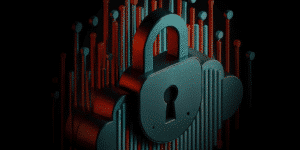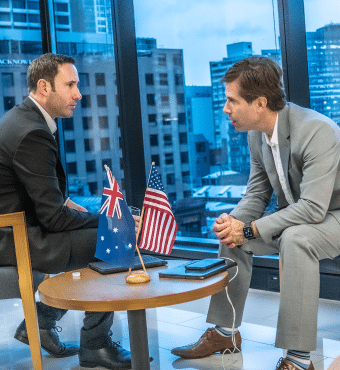UST Australia interviewed CyberProof’s President, Yuval Wollman, about cybersecurity, threats, and security measures that enterprises should implement. Below is a transcript of Yuval’s interview with UST Australia.
Matthew: You’ve had a wonderful career. You’ve done so much and seen it all. What has changed in the security landscape over that time?
Yuval: The main difference is that earlier this year, in February, the biggest cyber war conflict started in Ukraine. The combination of a physical military war with a cyber dimension was not in place 20 years ago, not even 10 years ago.
Even when you go back to Israel and how it fights with Iran and vice versa, you see a tacit cyber war taking place and now it’s more and more out in the open.
Only four days ago, the Albanian Prime Minister came to Israel. He said, “I was cyberattacked by the Iranians. Help me.” We’ve not seen that before so openly. Collaborations between Western governments and allies took place all the time, but not to that extent.
We’ve seen an unprecedented open collaboration – whether it’s the U.S., U.K., E.U., Australia, Japan or others supporting Ukraine with intelligence.
But it’s not only governments. It’s the first time that we’ve seen large technology companies providing open support. Microsoft and Google and others share their information, they open their intelligence centres to the Ukrainian decision makers. They helped to stop some of the attacks.
But first and foremost, it’s the Ukrainians themselves. They have developed capabilities since 2014. In the years between 2014 and 2022, there were very strong attacks against critical infrastructure and financial institutions. So, as they developed their military force and their air force, they also developed cyber capabilities.
Matthew: Are you seeing any movement of those attack and defence capabilities from the geopolitical sphere or nation states into the private sector?
Yuval: We cannot distinguish between the two. The Russians attack critical infrastructure, not only with real missiles but with cyber missiles, which often means privately held companies. The Solar Winds attack that was exposed in 2020 was an attack on the supply chain of Western enterprises, presumably related to Russian proxies.
The assets that a nation has are also in the private sector. So, the risk for the private sector has grown dramatically over the past year.
Matthew: What should board members and CSOs focus on in this changing threat landscape?
The threat actor landscape has grown dramatically, not only because of the war but also because of other trends that took place even prior to the war.
The exposure is much bigger now because organisations have become more digitised. They’re moving to the cloud, which creates more vulnerabilities. They’re working remote. And I’m not sure they have much more budget to counter that.
The first thing they need to do is prioritise. It’s not a security discussion. This is a business discussion, whether it’s a private enterprise or a government agency. The discussion should take place not only with the chief cyber executives, but across the board and management, to work with business stakeholders to understand what assets they need to protect. Where is the important data? What are the crown jewels, so to speak.
And then, according to that, you start asking yourself who is the threat? Where will it come from? And then you start to deploy resources to protect yourself as an organisation.
You want to project to your shareholders, to the company, ministers and the public as well that you have decreased the risk over time.
To read the full interview, click here.
Discover how CyberProof can help your enterprise stay secure –get in touch with a CyberProof expert.











